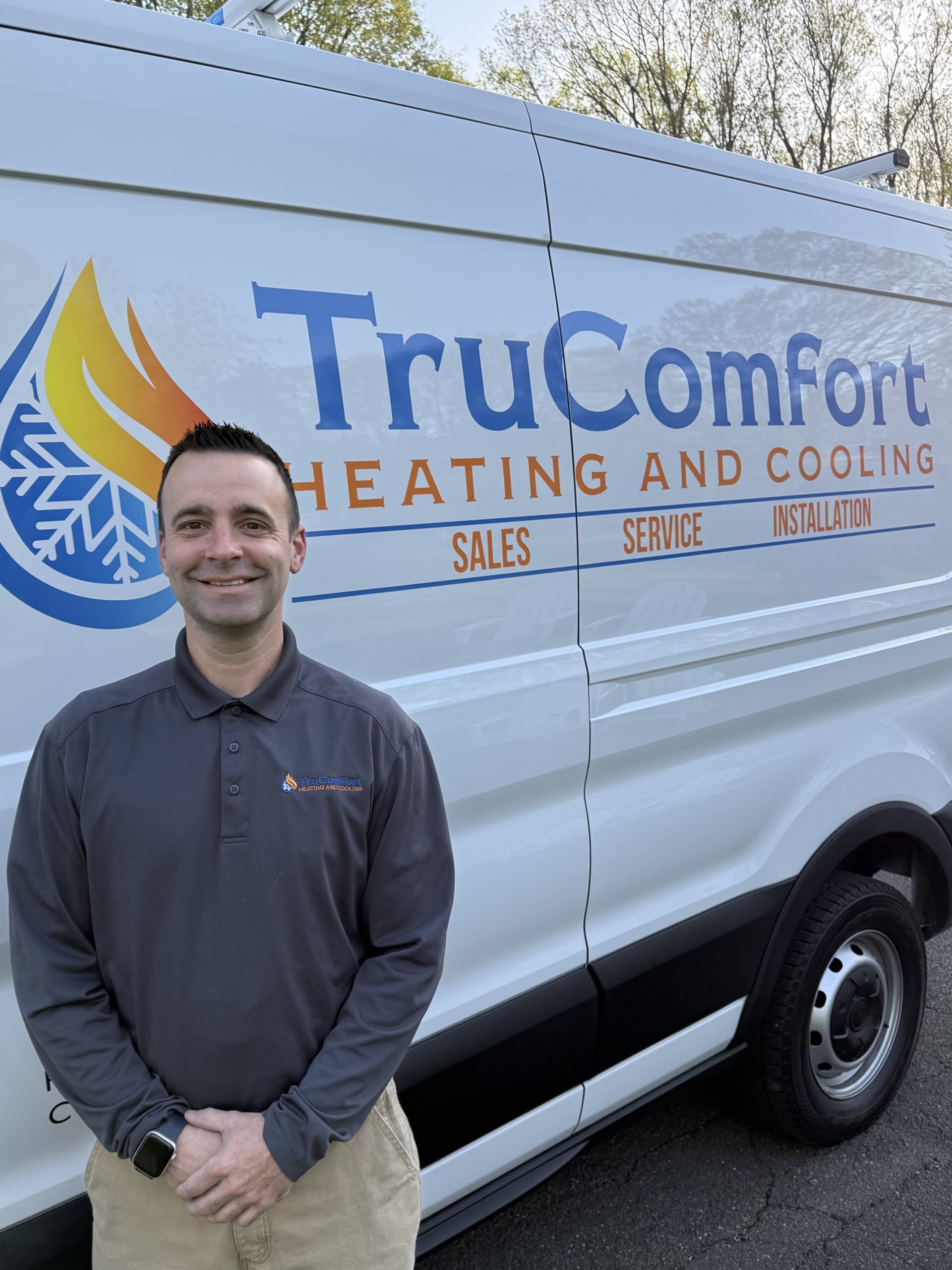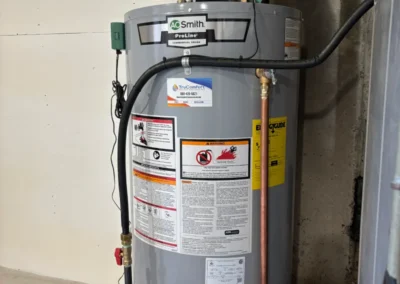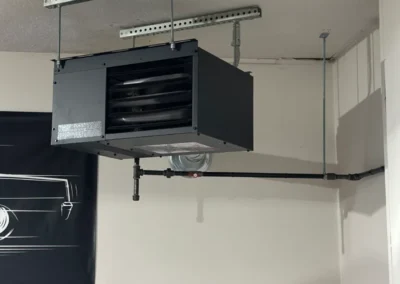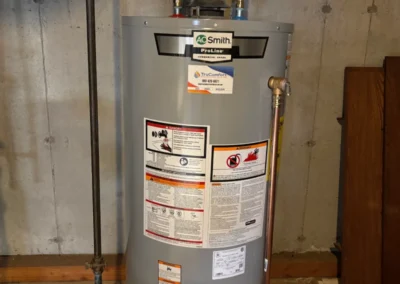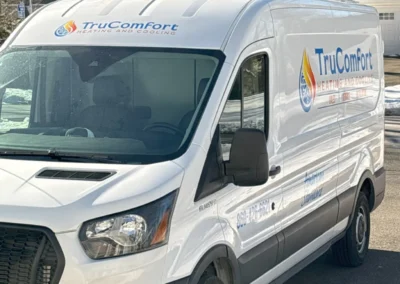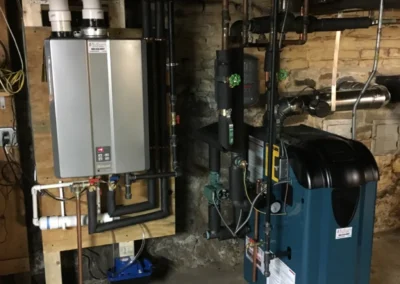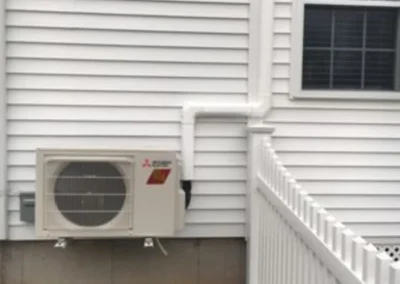Comfort You Can Count On
TruComfort Heating and Cooling Of Southington, CT
Proudly serving Southington, Cheshire, Plainville, Bristol, Avon, Farmington, West Hartford, and beyond, TruComfort Heating and Cooling delivers expert heating and cooling solutions with reliability and care. Whether you need installation, repairs, or maintenance, our team ensures your home stays comfortable year-round. Trust us for quality service, honest pricing, and exceptional workmanship in your community!
About TruComfort Heating and Cooling
At TruComfort Heating and Cooling, we’re more than just a heating and cooling company—we’re a local, family-owned business committed to keeping our community comfortable. With over 20 years of experience in the HVAC industry, we take pride in delivering personalized service, honest advice, and quality workmanship to every customer.
Learn More
As a family-run business, we understand the importance of maintaining a comfortable home throughout the year. Whether you need routine maintenance, emergency repairs, or a system upgrade, our certified technicians treat every home as if it were their own—with care, respect, and attention to detail.
Our dedication to customer satisfaction and community values sets us apart. When you choose TruComfort Heating and Cooling, you’re not just a client—you’re part of the family. Let us be your trusted partner for all your heating, cooling, and water heater needs, helping you stay comfortable in every season.
Our heating and Cooling Services
At
TruComfort Heating & Cooling, we provide expert
heating installation, repair, and
maintenance
as well as
cooling system services
in Southington, CT. Our team works on all major
HVAC systems, delivering reliable comfort,
better energy efficiency, and long-lasting
performance to keep your home running at its
best year-round.
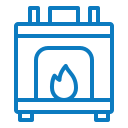
Heating Services
Stay warm with our high-efficiency furnaces, heat pumps, and boilers. From installation to seasonal tune-ups and emergency repairs, we keep your system running smoothly.

Air Conditioning Services
Beat the heat with our reliable AC solutions. We offer professional installations, fast repairs, and energy-efficient upgrades to maximize cooling comfort.

Indoor Air Quality Services
Breathe cleaner air with our purification systems, humidity control, and ventilation improvements. Our solutions enhance indoor air quality for a healthier home.

Ductless Systems
Enjoy flexible comfort with high-efficiency ductless systems. Perfect for any space, these energy-saving solutions provide customizable temperature control.
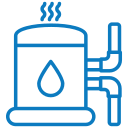
Water Heaters
Ensure a steady hot water supply with our expert water heater services. We install and replace gas, electric, tankless, and hybrid systems with same-day availability
Heating Service Call
Table of Contents
Why Quality Heating Service is Essential
Homeowners who dismiss regular heating service calls are gambling with safety and long-term cost. Heating system failures underpin thousands of annual emergency visits in Connecticut, most of which stem directly from neglect or skipped annual maintenance. A professional heating service call is the single most effective measure to actively prevent carbon monoxide leaks, inefficiency, costly breakdowns, and even dangerous winter outages. Wise owners see these visits not as an expense, but as an investment in lower utility bills, extended equipment life, and absolute peace of mind in peak seasons. Major reports confirm that homeowners who schedule annual tune-ups reduce emergency incidents by as much as 60%, while cutting heating costs 15% or more over the life of their system (source).
Purpose Of A Service Call
The essential purpose of every heating service call is to protect, optimize, and extend the lifespan of your home's comfort system. Professional technicians target both visible and hidden issues, addressing safety controls, combustion efficiency, heat exchanger integrity, and airflow obstructions. Each visit aims to catch minor faults before they balloon into catastrophic failures or safety hazards. Preventive inspection results in lower energy consumption and reduces the risk of high-dollar, sudden breakdowns when outside temperatures plummet.
Who Should Book One
Every Connecticut homeowner with a furnace, boiler, or heat pump should plan on at least an annual heating service call--especially those with older equipment, family members at risk, or a record of frequent repairs. First-time buyers or property managers ignoring this proven routine are exposed to unnecessary risks and higher costs. Owners experiencing erratic heating, strange noises, sudden utility bill spikes, or who simply want to keep warranties valid, have every reason to schedule an inspection before peak winter. It's the only smart approach to residential comfort and safety.
Service Call Goals Comparison
Type Primary Goal Typical Response Time Cost Range| Maintenance Visit | Improve efficiency, prevent breakdowns | Scheduled within 1-7 days | $80-$200 |
| Diagnostic Visit | Determine repair needed | 1-3 days | $75-$150 (diagnostic fee) |
| Emergency Visit | Safety and rapid restoration | Within hours (24/7 options) | $150-$400 |
Heating System Fundamentals
Understanding your heating system is the cornerstone of empowered homeownership. Most homes in Connecticut rely on forced-air furnaces, heat pumps, or boilers. Each system demands a different maintenance approach, and recognizing these differences ensures that service recommendations from technicians actually make sense. High-efficiency systems like ENERGY STAR® furnaces deliver up to 98.5% AFUE, slashing fuel bills--provided they're properly maintained.
Common System Types
Residential heating equipment falls into four main types, each with its own quirks:
- Furnace: Heats air and circulates it with a blower through ducts. Key for consistent warmth in Connecticut's cold spells.
- Boiler: Heats water, then distributes it via pipes and radiators or radiant floors--popular in older homes for even, consistent heat.
- Heat Pump: Transfers outside heat indoors, switching to cooling in summer. New cold-climate models work efficiently even through frigid winters.
- Hybrid: Combines a heat pump with a furnace for ultimate efficiency in fluctuating conditions.
Annual service is not optional if you want consistent performance. Ignoring these intervals shortens system life and escalates future repairs.
How A Furnace Works
A modern furnace starts with ignition--either pilot light or electronic. Gas or oil is combusted in the burner, transferring heat through the exchanger, then the blower forces warmed air through ducts. The process is precise: safety controls monitor flame and exhaust, while limit switches protect against overheating. Any weakness in ignition, burner, heat exchanger, or controls can spiral rapidly into a system shutdown or, worse, a safety hazard such as carbon monoxide leaks.
Typical Service Tasks
During a standard professional visit, expect technicians to:
- Change or clean air filters
- Inspect burners and test combustion
- Check safety controls and limit switches
- Clean heat exchangers
- Lubricate blower motor and mechanicals
- Calibrate the thermostat
- Inspect flue and venting for blockages
- Confirm proper airflow
Competent service covers these every single time. Cutting corners or skipping steps is a shortcut to system failure and higher annual costs.
System Type Service Needs Comparison
System Key Inspections Recommended Frequency Common Issues| Furnace | Filter, burners, heat exchanger, blower, flue | Annual | Ignition failure, dirty filters |
| Heat Pump | Coils, refrigerant, reversing valve | Annual | Low charge, ice buildup |
| Boiler | Burner, water pressure, expansion tank | Annual | Leaks, low pressure |
Inspection And Diagnostics
A heating service call is not guesswork--it's a systematic diagnostic process that answers, once and for all, "What is wrong with my system?" Ignoring this step risks hidden failures and exposes families to genuine danger. TruComfort's diagnostic checklist reflects the industry's best standards, focusing on every vulnerability:
Diagnostic Checklist
- Safety Controls: Test limit switches and flame sensors for correct response.
- Ignition System: Confirm pilot/electronic spark and burner operation.
- Burners/Flame: Inspect for correct intensity, color, and pattern.
- Heat Exchanger: Check for cracks or corrosion--undetected cracks are a top cause of carbon monoxide exposure.
- Draft/Venting: Ensure proper exhaust, inspect for blockages or leaks.
- Blower Function: Test startup, airflow, and motor operation.
- Electrical Connections: Measure voltage, check for frayed wiring or loose terminals.
- Thermostat: Calibrate and confirm system response.
- Carbon Monoxide: Use calibrated detectors, particularly on older systems.
This process isolates root causes fast: a single overlooked control or cracked exchanger can cost thousands in damage and even put lives at risk.
Diagnostic Fee Explained
The furnace diagnostic fee covers all time spent inspecting, pinpointing, and explaining failures in your system--usually $75 to $150 in Connecticut. Some reputable firms apply this fee toward the repair if you proceed immediately, but it's often charged separately. The fee pays for highly-trained techs, specialty testing equipment, and comprehensive analysis--not just a "quick look." Declining to pay for diagnostics leads to costly, repeat breakdowns or haphazard guessing by undertrained contractors.
When To Call For an Emergency Repair
Calling for emergency repair is non-negotiable the moment you sense a gas odor, the CO detector alarms, or you lose heat in freezing weather. Every hour delayed increases property damage risk and safety hazards. TruComfort's 24/7 response means you're not left waiting for the next business day--rapid intervention prevents burst pipes, hypothermia, and electrical fires. Only a handful of issues qualify as "wait and see"--most are time bombs.
Diagnostic Outcomes Comparison
Outcome When Likely Typical Cost Range Time To Resolve| Minor Repair | Simple component failure | $75-$300 | Same day to a few days |
| Major Repair | Component failure or damage | $300-$1,200 | 1-7 days |
| Replacement | Repeated failures, inefficient system | $3,000-$8,000+ | 1-3 weeks |
Homeowner Practical Guidance
Over half of emergency heating calls are preventable if homeowners perform basic pre-call troubleshooting and timely maintenance. Systems don't "just fail"--they send clear warning signs. Addressing them early not only protects your investment but can save hundreds on repair premiums.
Pre-Call Troubleshooting
Check the thermostat settings and battery, inspect the air filter, and verify that no breakers are tripped. Confirm the furnace emergency shut-off switch isn't off, and clear any visible blockages from vents or registers. Listen for unusual noises--rattling, sudden stops, or repeated cycling means there's a hidden problem. Owners who cover these bases before calling avoid embarrassment, speed up the diagnosis, and sometimes solve the issue themselves.
Preparing For A Visit
Efficient service starts with preparation. Clear access to your furnace, electrical panel, and vents speeds up the visit significantly. Have the system's maintenance record handy and jot down when symptoms started, their frequency, and any error codes from digital thermostats or control panels. Manage pets and keep children away from the work area--it protects them and the technician. This is standard professionalism and directly shortens your outage time.
Cost Expectations
The realities of cost structure are not a secret--just rarely explained fully to homeowners. Every heating service call bill is built from three components:
- Diagnostic Fee: The base charge for expert evaluation--$75 to $150.
- Labor: Hourly or flat-rate billing for the actual repair, typically $70-$150/hour in the region.
- Parts: Replacements like sensors, blowers, or control boards can range from $20 up to $800+, with OEM parts costing more.
Emergency surcharges can instantly double a typical labor fee, as after-hours or weekend calls disrupt technician schedules. Seeking a Same Day Heating Repair through reputable providers almost always costs less than waiting for a full breakdown and emergency premium.
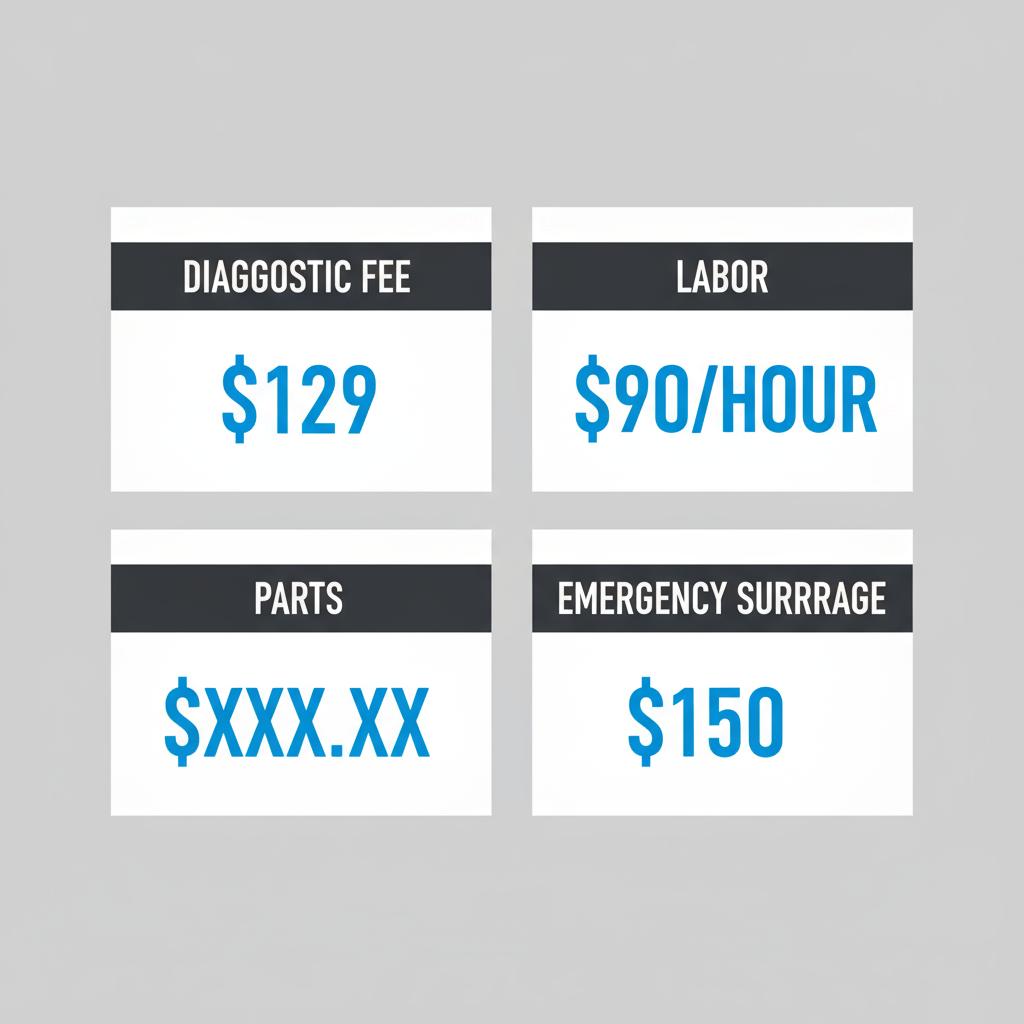
Understanding typical HVAC heating service call cost components.
Cost Component Comparison
Component What It Covers Typical Price Notes| Diagnostic Fee | System checks, basic testing | $75-$150 | Often applied to repairs |
| Labor | Hourly or flat-rate repair | $70-$150/hour | Varies by company/region |
| Parts | Sensors, motors, controls | $20-$800+ | OEM parts cost more |
Maintenance And Prevention
The HVAC industry's "play it by ear" approach to maintenance is obsolete. Energy Star and federal guidelines now insist on professional tune-ups once per year for most Connecticut heating systems. Older or high-use equipment calls for semi-annual checks, not just annual. Neglect these intervals and you're signing up for system failure at the worst time.
Service Frequency Advice
- New Furnace (<10 yrs): Annual tune-up preserves warranty, highest efficiency--combine with spring AC check.
- Older Furnace (10+ yrs): Requires at least annual, preferably semi-annual visits, as every year of age doubles potential for a breakdown.
- High-Use Homes: Semi-annual inspection is non-negotiable--heavy winter runtime accelerates wear and increases filter maintenance needs.
Regular diagnostics uncover issues before they affect safety or energy costs, making a proactive approach mandatory, not optional.
Advanced Care Tips
Proactive steps go beyond basic filter changes. Optimize airflow by ensuring no furniture blocks vents and that thermostat programming aligns with occupancy. Schedule zone balancing (adjusting dampers for even heating) every season. Carbon monoxide safety is non-negotiable: every visit should include a CO detector check, especially with older systems or after home renovations. For top performance and longest lifespan, homeowners should request a full combustion analysis--most low-cost contractors skip this crucial step.
Service Frequency Comparison
System/Age Recommended Service Reason Notes| New Furnace (<10 yrs) | 1x per year | Warranty & efficiency | Combine with spring AC check |
| Older Furnace (10+ yrs) | 1-2x per year | Prevent failures & safety risks | Consider replacement |
| High-Use Homes | 2x per year | Heavy use accelerates wear | Focus on filter & belts |
Service Call Process Flow
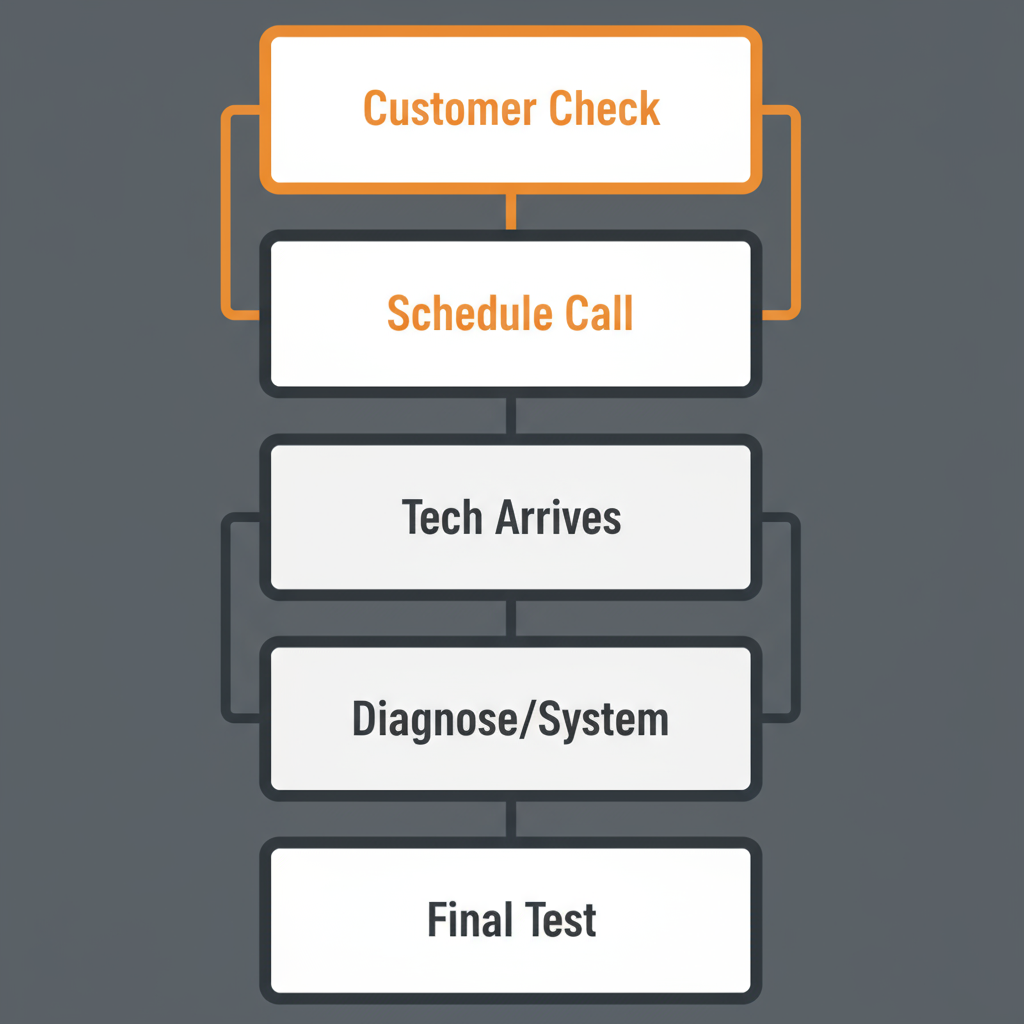
Step-by-step process of a typical TruComfort residential heating service call.
Next Steps For Homeowners
Every homeowner should treat suspicious noises, heat loss, or safety alarms as urgent--and address them immediately with a trusted company. Procrastination is a direct path to costly damage, voided warranties, and severe winter inconvenience. Record your system's maintenance and use this checklist when calling technicians:
Deciding When To Call
- No heat, acrid odors, or system alarms.
- Utility bills spike suddenly.
- Equipment is due for its annual tune-up.
Preparing For Service
- Clear access to the system.
- Document symptoms, model numbers, and error codes.
- Ask about the 24 Hour Furnace Repair option if needed.
- Confirm whether diagnostic fees apply to the total repair.
For fastest results--including Same Day Heating Repair--visit the TruComfort heating service page to schedule or request immediate assistance.
Resources
We welcome your comments!
Our Mission
Our mission is to provide reliable, energy-efficient heating and cooling solutions that ensure the comfort and safety of our customers. We are committed to delivering exceptional service with integrity, innovation, and a focus on quality workmanship. Our goal is to build long-lasting relationships with our customers by exceeding their expectations and enhancing the comfort of their homes all while maintaining a commitment to sustainability and community responsibility.
Our Value
We are dedicated to delivering exceptional service through honesty, integrity, and professionalism. Our values center on quality craftsmanship, customer satisfaction, and continuous improvement. We prioritize safety, reliability, and respect in every interaction, ensuring that every customer feels valued and every job is completed to the highest standards. We embrace innovation and sustainability, striving to provide energy-efficient solutions that enhance comfort and reduce environmental impact. Our team is committed to fostering trust and building lasting relationships with our customers and community.
Comfort Care Maintenance Plans
Protect your HVAC investment and enjoy peace of mind with our Comfort Care Maintenance Plans. We offer a plan for every budget and situation, designed to keep your system running at peak performance year-round. Regular maintenance not only extends the life of your equipment but also improves energy efficiency and prevents unexpected breakdowns.
Elite Plan
Full system cleaning added benefits, including priority service and discounts on repairs.
Essential Plan
Ideal for basic, routine check to keep your system running smoothly.
Elite Winter Plan
Tailored maintenance focused on your heating system to ensure warmth and reliability through the colder months.
Elite Summer Plan
Specialized maintenance for your cooling system to keep you cool and comfortable during the hottest months.
